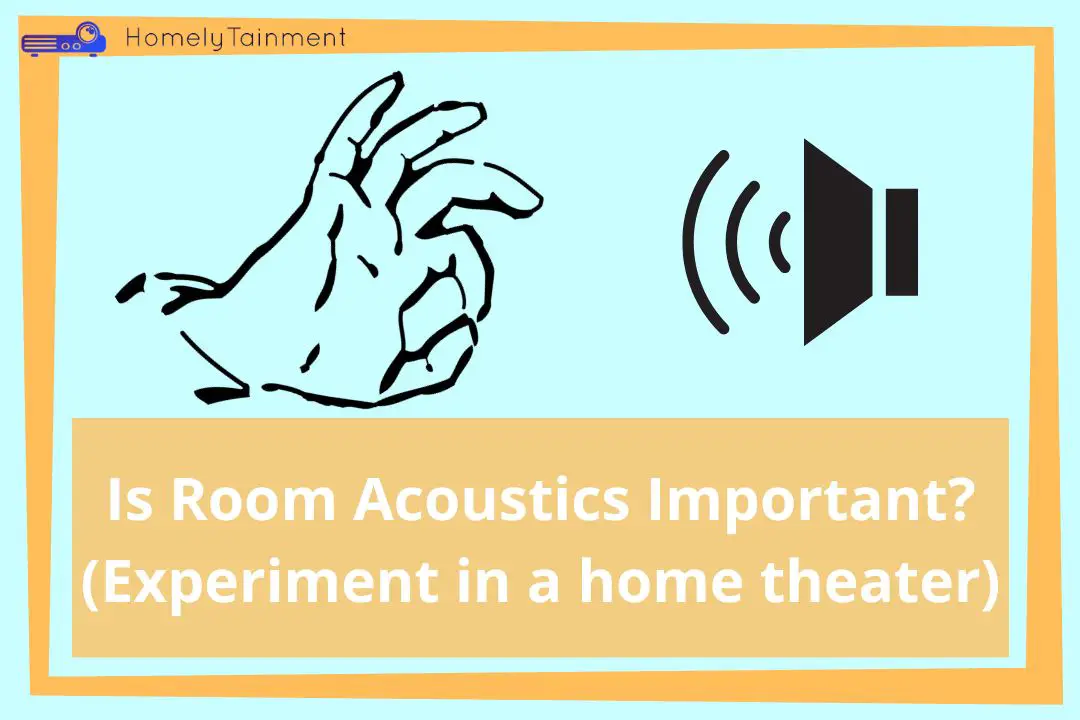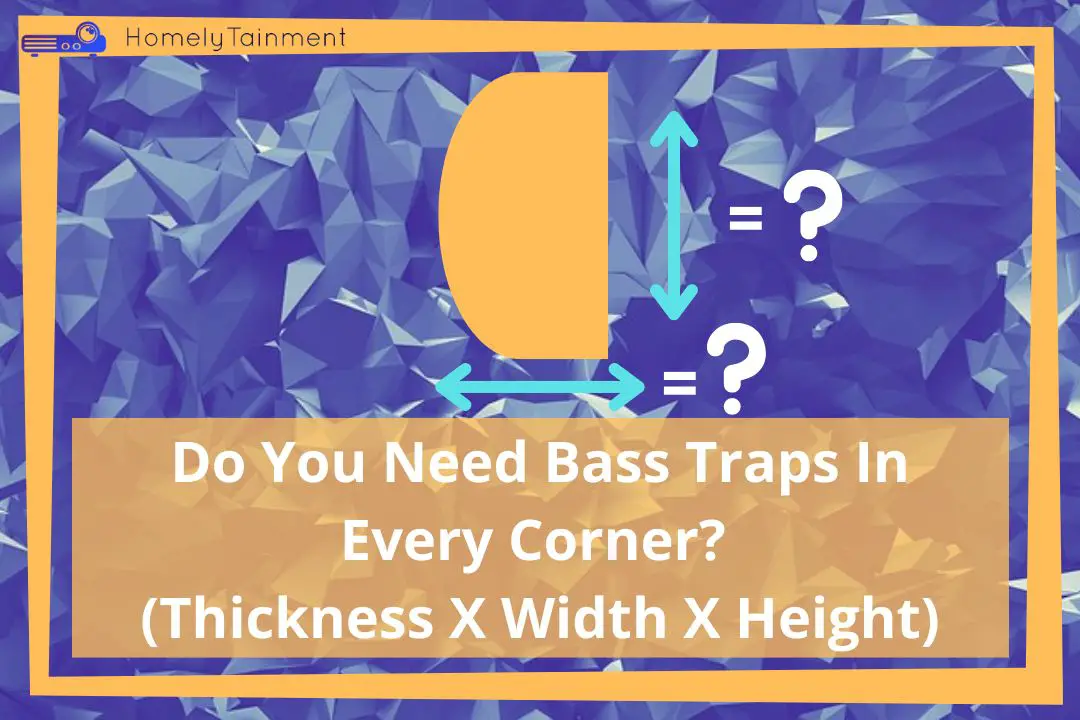
Homelytainment earn commissions (at no additional cost to you) if you purchase products from retailers after clicking on a link from our site.
Wall mounting is one of the best ideas to have a Dolby Atmos effect. This idea is becoming popular day by day. But is it a good or bad idea to wall-mount speakers?
At A Glance: The wall-mountable speakers are created with a technology that contributes to the wall reflecting frequencies. However, if you wall-mount regular speakers then the wall reflection will amplify certain frequencies such as bass. The bass will be increased more than what is needed.
Keep on reading as we will be discussing a solution to this bass-boosting problem and I will also be explaining the reason for it. Also, what about ported and sealed speakers?
Which Speakers Can You Wall Mount?
Non-wall Mount Speakers
These are the speakers such as bookshelf, floor-standing, or regular satellite speakers. These speakers are engineered in a way that their sound flows in a circle and expands from there.
The frequencies that come out of the front of the speakers will react quickly to the ears, and the frequencies coming from the back will reach a little late. These microsecond delays can be sensed very well by human ears, and this may or may not ruin the experience for you. Because it depends on the distance from the wall.
Let’s discuss the pros and cons of wall mounting, and non-wall mountable speakers.
The Pro
As I have told you earlier. The sound expands in a circle form from the center of the speaker. By wall mounting, the non-wall mountable speakers. The frequencies coming from the back will be front-directional.
In this way, you will get all the frequencies at once with minimal to zero delays in them. This will instantly pump the movie experience for you.
Your brain will not be confused by hearing the same dialogue twice with a microsecond delay in it.
Read my this guide about the best speakers for home theater. Don’t forget to read the comparison table.
The Con
However, these speakers are not engineered for wall mounting. That’s why the wall will act as an amplifier and will amplify certain frequencies such as lower-mid or bass frequencies overall. This will boost the bass. If you have installed the subwoofer too, then the excessive bass in the theater room will contribute to an unpleasant experience. However, you can counter this issue.
The Solution To This Con
You have to trap the excessive bass that is pumping out of each speaker. To trap it, you must install bass traps behind each speaker that is mounted to the wall.
This will trap the bass and will make the experience great again for you.
Know how to acoustically treat your home theater to eliminate all acoustic-related problems. I have put a simple guide for you to follow.
Special Wall Mount Speakers
These speakers are engineered in a way that the frequencies that are expanding in the circle shape will contribute to the reflected frequencies rather than ruining the experience for you.
But take my advice with a pinch of salt. Not every speaker will have these effects. You have to look for the quality of the speaker and its manufacturers.
A cheap speaker from a bad brand will always sound the worst, no matter if it is labeled as wall-mountable or not.
I light the green signals for you if the speaker is of good quality.
Read my this review guide about the best wall mount speakers for home theater. The first three are my favorites.
What about mounting the ported and sealed speakers?
Case#1 Non-wall Mountable Speakers
These speakers may be ported or sealed. If these are ported no matter if the port is at the front or back, but if you want to wall-mount it then you must stuff the port.
You can stuff it with a special sponge or by ordinary cloth. Because you don’t want the energy coming out of the port to be reflected by the wall.
Case#2 Wall Mountable Speakers
These speakers don’t have ports anywhere. But if there are ports in it, then this speaker is not a true mountable speaker.
So, keep in mind that wall-mountable speakers are supposed to be sealed only.
Know how to perfect the home theater audio in 5 steps. I have written about the most simple steps for you.
Did you get something out of this speaker guide? Hold On We Have Something Exciting To Share.
[the_ad id=”4771″]FAQs
How far should speakers be from the back wall?
There is no absolute number for it because every theater room is different. You must find the sweet spot for yourself. To find the sweet spot. Play a song and move the speaker. Bring it close and move it away from the wall. During this movement, closely observe the same tunes.
Stop the movement where you can feel the difference and where your ears are satisfied the most. This is the sweet spot for you.
What is the best height for wall-mounted speakers?
The ear-level height will work for almost every speaker in the surround sound, but the surrounding sides and rear speakers should be at ear level or 1 foot above the audience’s head.
Can you mount speakers on drywall?
You can mount regular home theater speakers on the drywall. But don’t think of mounting heavy-duty speakers because it might bring serious consequences. But if you want to do it then you first research the drywall material and if it is new construction then directly ask the contractor company who constructed your house.
Can I mount bookshelf speakers on the wall?
You can mount every type of bookshelf speaker on the wall. If the speakers are average, then you can mount them by using normal mounting hardware. This type of speaker can satisfy almost every type of home theater. But if these speakers are heavy-duty, then you need special heavy-duty hardware to mount them to the wall.
How do you hang speakers without damaging walls?
You can find mounting hardware on Amazon that can mount speakers without damaging walls. This mounting hardware has adhesive tape. Pill the tap off and attach them to the wall. You can then mount small to average-sized speakers with the help of this hardware. However, you can’t mount heavy-duty speakers with them.
Helpful Resources For The FAQs To Read More
- This was my opinion, read more about it on UturnAudio Blog. (Resource for the first answer)
- To know the science behind it, read my guide on how high should each speaker be mounted in surround sound. (Resource for the second answer)
- This was my opinion, read more about it from Cnet Blog. (Resource for the fourth answer)
- Watch the below video to know how they work. (Below Video Resource for the fifth answer)




